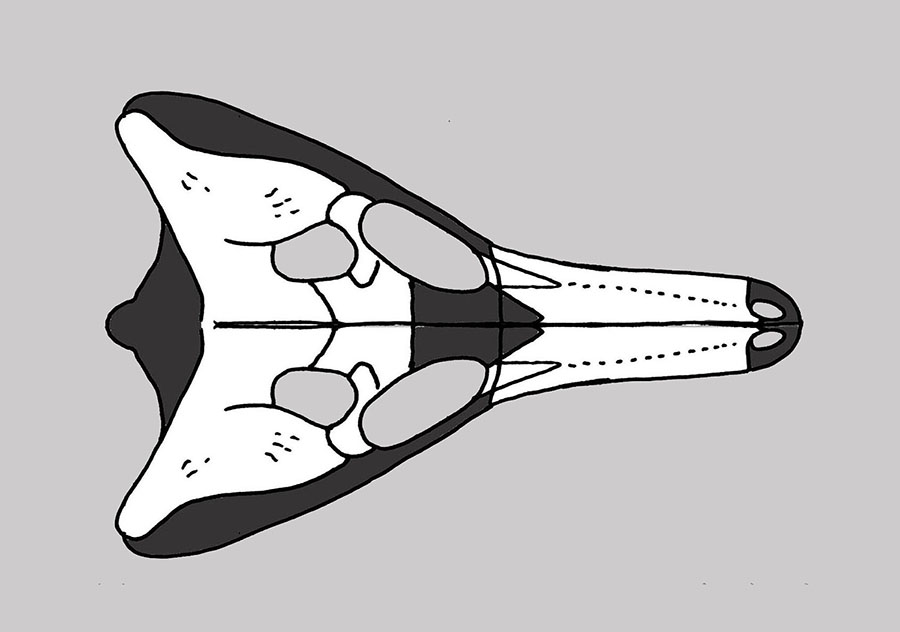
Species: longipes (BROOM, 1904) HAUGHTON, 1924
Etymology:
= Notochampsa longipes BROOM, 1904
Holotype: SAM 445
Locality: Eagles Grag, Barkly East, East Cape Province, South Africa.
Horizon: Upper Elliot Formation.
Biostratigraphy:
Age: Hettangian-Lower Sinemurian Stage, Lower Lias Epoch, Early Jurassic.
Material: Pelvis, partial femur, tibia, fibula, tarsus, metatarsals I-IV, 1 phalanx of the 2nd digit and 2 phalanges of the third, and dorsal scutes.

Erythrochampsa longipes (modified from Haughton, 1924).
Referred material:
BROILI & SCHRODER, 1936
Locality: Noupoortsnek (Naauwpoorts Nek) (578), Bethlehem District, South Africa.
Horizon: Upper Elliot Formation.
Biostratigraphy:
Age: Hettangian-Lower Sinemurian Stage, Lower Lias Epoch, Early Jurassic.
Material:
Munchn. Samml. Nr. 1936 II 7: Cervical vertebrae, ulna radius, and osteoderms.